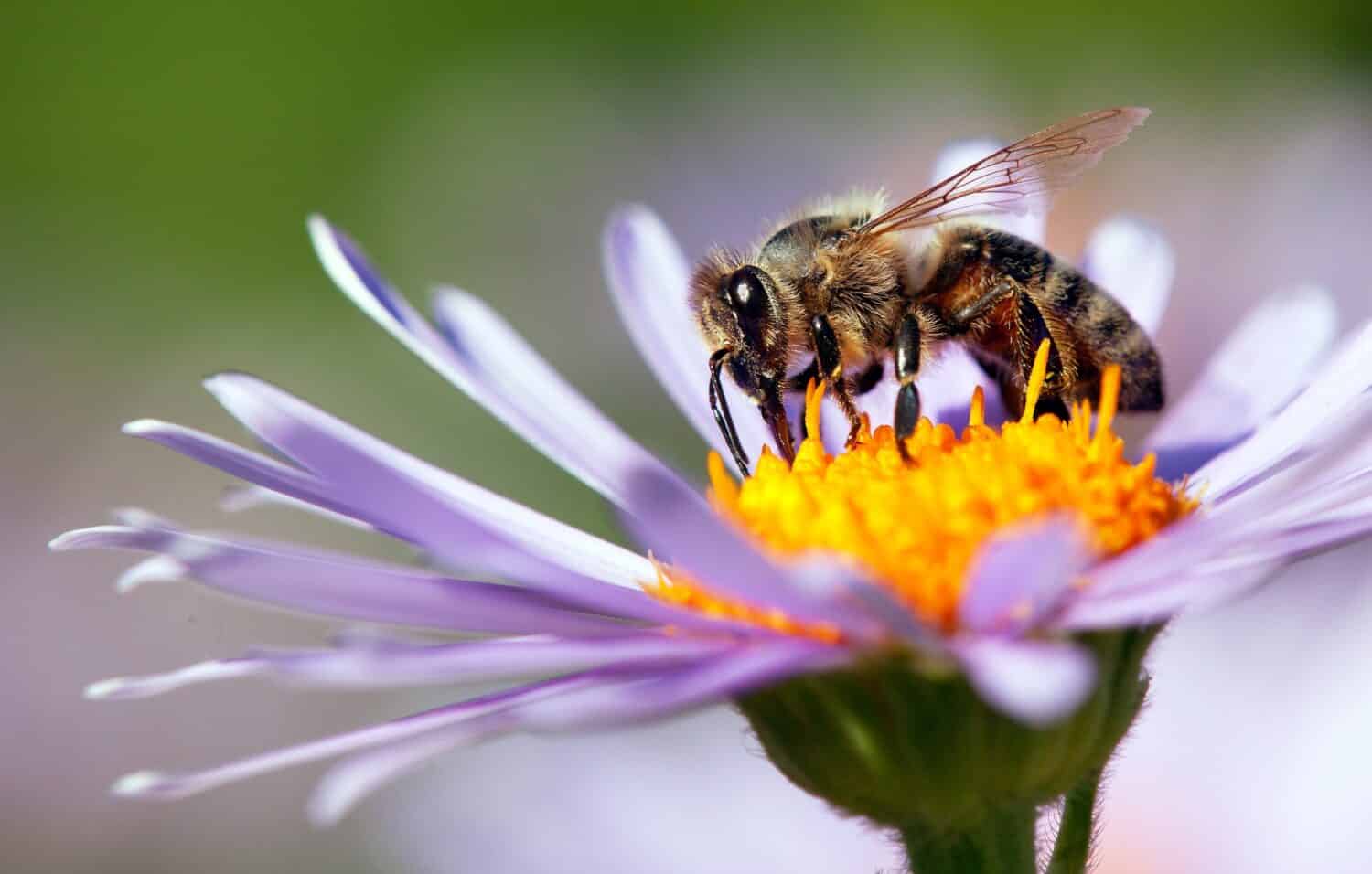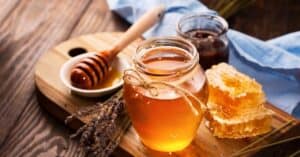Anthropologists believe humans have been eating honey for millions of years. Early humans used the bees’ rich nectar as a source of accessible energy to fuel their daily activities. Now, it’s a favorite addition to baking and tea.
We can thank bees for this incredible substance, but how do they make it?
Here’s everything you need to know about how bees make honey, why they do it, and how to support bees through appreciation and conservation.
The Life of a Bee Colony
Bee colonies have a unique hierarchal structure that works together to help the hive thrive. Some key players in the structure include the following.
The Queen
The Queen is the mother of the colony. Her main responsibility is laying eggs and producing more workers. A healthy Queen may lay up to 3000 eggs each day.

Queen bees can lay over 3,000 eggs in a single day.
©iStock.com/Inventori
Drones
Drones are the only male bees and have the sole purpose of reproduction. They typically leave the colony at maturation to reproduce with another queen.
The Workers
Most bees in a hive are worker bees. These all-female troops have several roles within the hive, including:
- Nurse bees — these workers care for the eggs and larvae.
- Developing bees — these workers care for the hive and construct the honeycomb.
- Guard bees — these workers protect the hive from invaders, such as other insects. They are willing to sting the invaders and die to protect the colony.
- Forager bees — these bees fly out of the hive to collect nectar, pollen, and water.
Forager bees and developing bees work together to make honey. Some colonies also have laying worker bees — typically evolving when a queen is gone or failing to produce sufficient eggs.
While the worker bees are instrumental to the honey-making process, they couldn’t do it without the support of the entire colony.
With that in mind, here’s an inside look at how bees make honey!
Step One: Finding Nectar
Honey bees are efficiency experts. First, they send out scouts to find rich sources of nectar. The scout bees — a type of forager bee — can detect flowers through visual and olfactory cues.
Bees can see flowers through the 6,300 facets that make up their eyes. Their eyes perceive color and contrast differently than humans, allowing them to spot nectar sources at a distance. They can also pick up UV light and determine how long it would take to get to and from the flowers before the sun sets.
The scout bees can also smell the nectar sources. Scientists estimate that a bee’s olfactory system is 40 times stronger than a human’s.
Finally, bees also rely on electric fields to determine their proximity to a flower. As the bee approaches the flower, the negative electric charge reacts to its positive charge and twitches the hair on its legs and body—similar to rubbing your socks on the carpet or a balloon on your hair.
Scientists have also determined that large swarms of bees produce a powerful electrical charge, showcasing just how incredible these tiny creatures truly are!
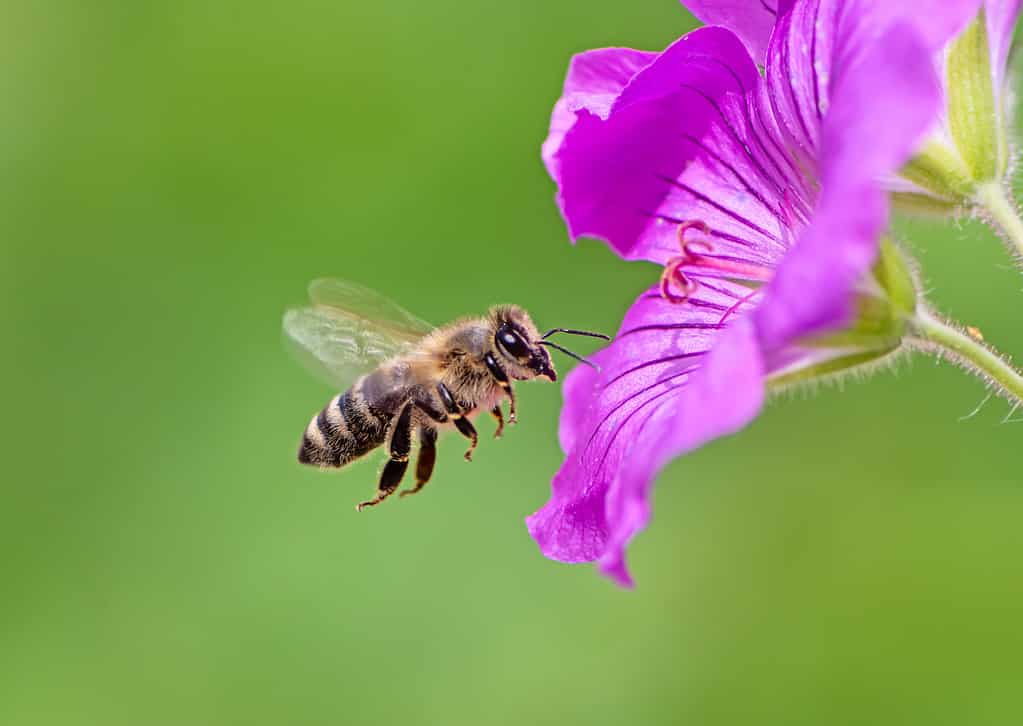
Honey bee flying to a purple geranium flower blossom.
©iStock.com/manfredxy
Step Two: Collecting Nectar from Flowers
When a scout bee finds a good nectar source, they return to the colony. The scout bee will then communicate its findings to the forager bees through a series of steps and movements. Some call this the “waggle dance.” The nuances of this dance are still a mystery to scientists.
The forager bees fly out to the flowers and suck up the nectar with their proboscis— a long, tube-like tongue. Once they have their internal honey sac full, they return to the hive.
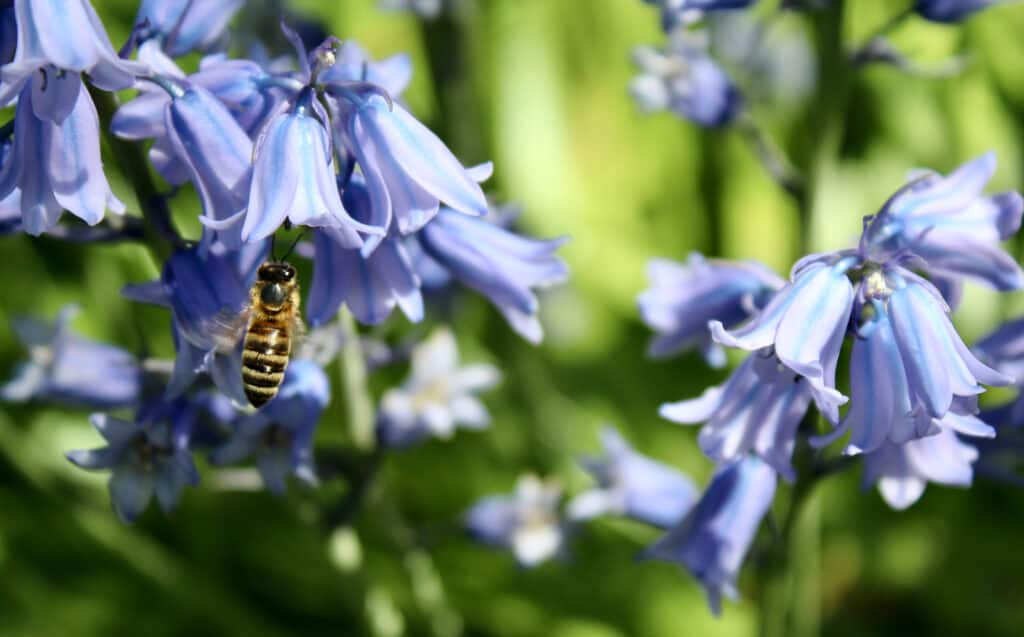
Bees collect nectar from flowers, then return to the colony.
©Svetlanko/Shutterstock.com
Step Three: Transforming Nectar into Honey
Here’s where people tend to get grossed out by the honey-making process.
When the bee returns to the hive, it regurgitates all the nectar from its honey sac. The nectar mixes with saliva and enzymes during this process, changing its structure by breaking more complex sugars into simple sugars.
What happens next depends on several factors, such as the amount of nectar collected, the timing, and the temperature.
As the foragers regurgitate the nectar, developer bees take it and pass it along for storage. If there is a lot of nectar—known as a good nectar flow—the bees will immediately store it in honeycombs. Alternatively, if there’s not a good nectar flow, they’ll pass it along down the chain further for more handling before storing.
Honey created during poor flow periods is considered better than honey from good nectar flows due to the additional enzymes and processing in the hive.

Honey bees partially fill honeycombs to let the honey ripen and to store it for the winter.
©Goncharov Taras/Shutterstock.com
Step Four: Ripening the Honey
The newly regurgitated nectar has a high water content. To get the rich, thick consistency of honey as we know it, the bees start the ripening process.
During the active phase of the ripening process, the bees will repeatedly ingest and regurgitate the nectar. This helps remove about 50% of the water content via evaporation as the liquid warms up. The bees may also fan the nectar with their wings to expedite the process.
Next, the bees partially fill combs with the nectar and let it sit for a few days—the duration depends on the fullness of the cell and the temperature. This stage is known as passive ripening.

Honey bee investigating a honeycomb.
©Aleksandr Rybalko/Shutterstock.com
Step Five: Storing the Honey
Next, the bees make wax and cover the combs to protect the honey inside. This step keeps the honey contained during the winter months as a valuable food source for the colony.
The bees will ingest plenty of honey to start this process, providing energy for their wax glands to start production. They mold the wax droplets with their mandibles to create a pliable substance. Then, the wax is stretched and applied to each honeycomb.
Once the honey is fully “capped,” beekeepers will harvest it, leaving behind plenty to support the colony during the winter.
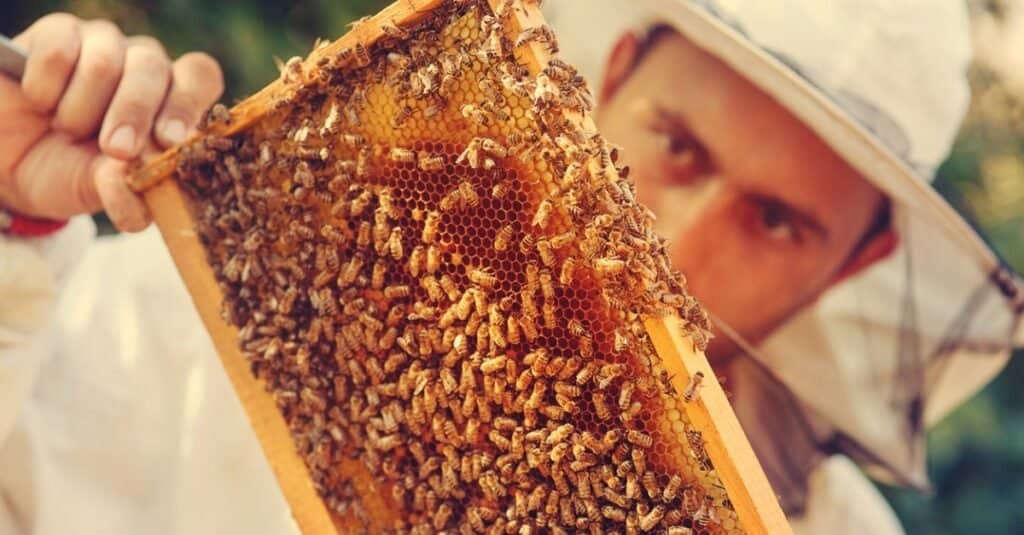
A Beekeeper is collecting honey from a honeycomb with bees.
©iStock.com/djiledesign
Why Honey-Making Is Important
The importance of honey-making isn’t about having a healthy sweetener or creating delicious baked goods.
During the nectar-collecting process, the bees unintentionally collect pollen from the flowers they visit. Then, this pollen is distributed to other flowers.
This process is the basis of pollination and the reason we have fruit, nuts, and flowers. According to the FDA, approximately one-third of our edible crops rely on honey bee pollination. However, honey bees are responsible for pollinating 80% of flowering plants.
In other words, making honey is a key driver in our natural world’s overall health.
How to Support the Bees
Learning more about bees is an important first step in supporting bees. You can also:
- Plant a pollinator garden — plant native flowers that attract pollinators, like bees and butterflies.
- Avoid chemical use in gardening — opt for natural pest resistance rather than chemical interventions.
- Be slow to mow — let the dandelions stay for a few weeks before you mow the lawn. The bees will thank you!
- Create a bee bath — place some shallow dishes of water or river stones in a bird bath for bees to rest and recharge as they forage.
- Support sustainable beekeepers — buy honey from beekeepers who practice sustainable harvesting.
Now you know the interesting process of how bees make honey. Take an active role in protecting the pollination process using the tips above.
Thank you for reading! Have some feedback for us? Contact the AZ Animals editorial team.

